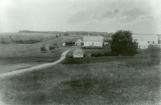1
Images of hearth and home always provide the clearest and most interesting stories of a people. Over 700 families were removed from their homes during the trauma of the 1952-53 expropriation that made way for CFB Gagetown. They were uprooted from places that their ancestors founded and developed over a century earlier. The following items, owned and used by the families of the area and accompanied by photographs of the homes from which they came, give insight into the lives of the former residents that the written word cannot impart.2
Picking blueberries, possibly near Enniskillen, about 19101910
Enniskillen
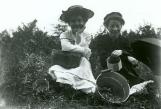 Credits:
Credits:Queens County Museum Collection
3
These blueberry pickers from Enniskillen illustrate the ease and joy of life that is remembered by the former residents of what is now CFB Gagetown. Former resident Douglas Woods reflected on his early life in this 1998 oral interview:"When I think of the Army Camp Area, I think of the help, the care, the love, the support. Everything was positive, everything was tremendous because you can't measure the quality of life, only what you have in love and support for people and that to me is beyond all reasoning."
5
The Burgess Homestead at New Jerusalem is one of hundreds of farms in the area and illustrates the rural ideal and quality of life so fondly remembered.6
About 1890. Samuel Vallis (1829-1900) and his wife Elizabeth Vallis (1828-1910), New Jerusalem1890
New Jerusalem
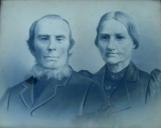
7
The people were sturdy folk. Hard working and steadfast in the commitment to family, farm and their church. Samuel Vallis (1829-1900) and his wife Elizabeth Vallis (1828-1910), lived at New Jerusalem.8
Manor House Farm, 1952 Short Family, New Jerusalem1952
New Jerusalem
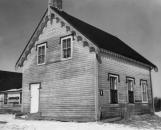 Credits:
Credits:Base Gagetown Community History Association
9
The Short Family, Inchby, lived on what was known as the Manor Farm. Wilmot Short, who owned the farm at the time of the expropriation, was a farmer, market gardener, lumberman and hunting guide.10
Eaves Trim, about 1850 Manor House Farm Short Family, New Jerusalem1850
New Jerusalem
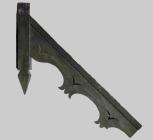 Credits:
Credits:Queens County Museum Collection
11
Along with a few photographs, all that remains today of the elegant little farm house is this piece of the eaves trim. The craftsmanship and attention to detail of this piece illustrates refinement and appreciation for fine design.12
Clock, about 1890 Short Family, New Jerusalem1890
New Jerusalem
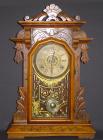 Credits:
Credits:Queens County Museum Collection
13
This attractively carved mantel clock was in the possession of the Short Family, Inchby for many years. It was made about 1890 by "Ingaham and Co. Bristol, Conn."14
Chair, about 1840 John Smith, New Jerusalem1840
New Jerusalem
 Credits:
Credits:Queens County Museum Collection
